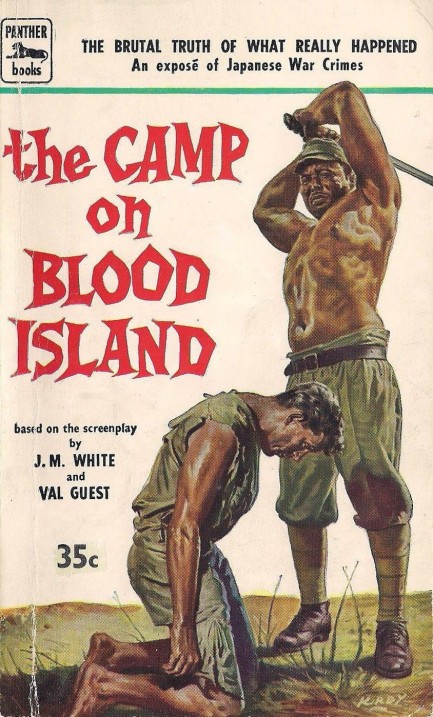| Vintage Pulp | Jan 13 2018 |

… two... and three. Wait. I screwed up again. That would've been on three and. I meant to do it on three.

Here's something backwards from what we usually share—a novel adapted from a film instead of vice versa. The Camp on Blood Island is a 1958 British-made World War II film written by J.M. White and Val Guest, and when you learn it was produced by schlockmeisters deluxe Hammer Film you could be forgiven for suspecting it was low rent b-cinema, but this is Hammer trying to be highbrow. Near the end of the Pacific War, a Japanese prison camp commandant decides that if Japan surrenders he'll execute all his prisoners. So the prisoners decide to prevent news of any prospective surrender from reaching the commandant by sabotaging communications, and they also prepare to rebel when the times comes. We may check the film out sometime, but we were mainly drawn by the paperback art. Not only did it remind us that prison camp novels are yet another subset of mid-century literature, but we saw the Josh Kirby signature on this one and realized we haven't featured him near enough. Last time we ran across him was on this excellent piece. We'll dig around for more. And we may also put together a small collection of prisoner-of-war covers later. They range from true stories to blatant sexploitation, and much of the art is worth seeing.




































































